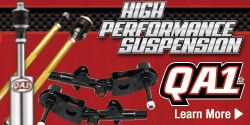Thanatos340
Well-Known Member
How critical is it to have a closed PCV system vs an open PCV system?
I have a new 408 that is just starting to get broke in. Like many "uninformed" before me I did not understand the importance of a PCV system. After chasing a oil pan leak and then reading a good bit here, It seems that just having two pretty breathers on my valve covers is a really bad idea.
Almost all aftermarket VC breathers come with one PCV and One Breather. This would be an open system yet this is what I see on most cars.
How necessary is it that one side (PCV) goes to intake vacuum and the other side goes to Carb Breather for a closed system? Wouldn't you need the positive air flow from the carb breather to really be a "Positive" crankcase ventilation system?
As always, thanks for all the advise. I am still buying my education one wrong part at a time. ;p
I have a new 408 that is just starting to get broke in. Like many "uninformed" before me I did not understand the importance of a PCV system. After chasing a oil pan leak and then reading a good bit here, It seems that just having two pretty breathers on my valve covers is a really bad idea.
Almost all aftermarket VC breathers come with one PCV and One Breather. This would be an open system yet this is what I see on most cars.
How necessary is it that one side (PCV) goes to intake vacuum and the other side goes to Carb Breather for a closed system? Wouldn't you need the positive air flow from the carb breather to really be a "Positive" crankcase ventilation system?
As always, thanks for all the advise. I am still buying my education one wrong part at a time. ;p
















